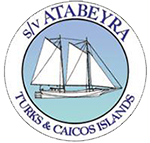 Odontosyllis Enopla worms have been performing their bioluminescent mating ritual in the TCI from the beginning of recorded time. Chris Columbus and crew were the first Europeans to sail through these islands…at that time he wrote in his logs of the unique local “fire worms”.
Odontosyllis Enopla worms have been performing their bioluminescent mating ritual in the TCI from the beginning of recorded time. Chris Columbus and crew were the first Europeans to sail through these islands…at that time he wrote in his logs of the unique local “fire worms”.
There are many organisms in the marine world that are bioluminescent. Unique to the TCI, the O. Enopla worms bio luminesce during mating activities that take place every month following the full moon. Three days following a full moon, approx. 50 minutes after sunset, females rapidly swim to the surface and emit a bright green chemical that attracts the males who soon follow. One female can attract many males.
O. Enopla is commonly found in shallow bays around the TCI. They live in tube-like structures on protected, sandy bottoms.
O. Enopla can grow up to 35mm long, but the average female is 20mm and the average male is 12mm. They are worm-like, with 2 pairs of eyes and many small teeth.
At approx. 50 minutes after Sunset, female worms rise from the bottom and swim in circles on the surface while releasing a bright green bioluminescent substance. A female can glow for up to 8 seconds and can repeat this process up to 33 times over 12 minutes (or until she attracts a male). When a male recognizes the cues, it emits short bursts of light while swimming towards the females. Usually, several males are attracted to one female. When they meet, the males and females swim around each other in a narrow circle shedding their eggs and sperm. They then return to the bottom where they lose their swimming bristles and build new mucous tubes.
The only observed predator of Odontosyllis Enopla has been the silverside, which feeds on the worms during mating. However, when collected, the fish had regurgitated the worms and were paralyzed, leading to the conclusion that the bioluminescent substance, if not the worms themselves, are toxic.

